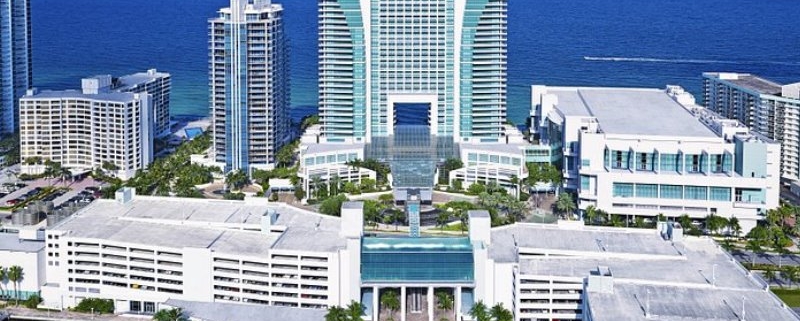With the year starting out amid uncertainty and no small amount of pessimism, there are certain strategies that promise to play well amid the environment. Read on to find out what will work in 2023.
1. Sell Industrial Assets in Overpriced Markets
Industrial assets in some of the “hot” markets like the Inland Empire, Orange County, Miami, Phoenix, San Francisco and San Jose, during the last few years, have seen rents increase at least 50% and cap rates compress to 3.0%-4.0%. With supply chains back to normal and less demand for products due to raging inflation, rents may decline in these markets by 20% or more. Industrial assets in these markets should be sold and the proceeds reinvested in more stable and value-priced industrial markets in the Midwest, Texas, Tennessee, and the Carolinas.
2. Sell Net Lease Properties
The net lease industry has been very robust during the last few years courtesy of the Fed’s zero interest rate policy and abundance of capital. However, with the Federal Funds rate at 4.25% and increasing to 5.0% or more by the first quarter of 2023, net lease assets will decline in value substantially as cap rates increase. The net lease investment business is really a bond spread game, by buying long-term leases at cap rates of 6.0%-8.0% and financing these assets at mortgage rates of 5.0%-7.0%. These investments tend to have long durations of twelve to fifteen years, which may cause large price decreases when rates rise. As with corporate bonds, when rates rise, the value of the net lease assets falls.
3. Increase Allocation to Public REITs and Reduce Allocation to Private CRE
The 2022 total return for public equity REITs as shown by the FTSE NAREIT All Equity REITs Index has declined by 24.95%. Many REITs are trading at or below NAV value and less than comparable private CRE values and should be purchased.
4. Sell CRE Assets in Overpriced Gateway Markets and Reinvest in Suburban and Sunbelt Markets
The majority of CRE investment and development activity pre-covid had been concentrated in the 24-hour Gateway cities that include New York, San Francisco, Chicago, Portland, Atlanta, Oakland, Seattle and Los Angeles. Many properties in these markets are suffering with large vacancies, low utilization and discounted values due to high crime and homelessness policies in these markets. Investors should sell assets in these markets and reinvest in suburban areas surrounding these Gateway cities and the higher growth and lower tax Sunbelt markets.
5. Sell Overpriced Core Assets and Reinvest in Opportunistic Assets
Institutional investors typically focus on the risk and return characteristics for various CRE investment strategies. The lowest risks are core and core plus investments, which are typically fully leased, institutional quality, Class A properties with little or no leverage. The next riskiest investment strategies are value-added strategies which are higher risk and involve some property redevelopment, tenant adjustment or leasing, or with operational problems. The riskiest sectors are opportunistic strategies that involve a high degree of redevelopment, leasing, tenant relocation or change or may be in financial distress. Many core properties are still trading at sub-5 % cap rates and should be old. The proceeds should be reinvested in higher-return opportunistic strategies.
6. Invest in Hotel Assets with Expected Higher Inflation
According to Smith Travel Research, the major lodging markets are forecast to achieve solid gains in RevPAR during 2023. These gains include 8.6% for the 65 largest markets and 9.3% for the 25 largest markets. Driving these returns are robust leisure travel, increasing business travel with a return to normal for the convention business and higher occupancy and average daily rate. Both occupancy and ADR are expected to increase 4.2% to produce the higher RevPAR. By year-end 2023, 53 of the 65 top markets in the STR forecast are expected to have reached, or surpassed, their 2019 RevPAR levels. Leisure-centric markets which are expected to see their 2019 RevPAR levels exceeded by 20% include Savannah, GA, Miami, FL, St. Petersburg, FL and Coachella Valley, CA.
7. Invest in CRE Proptech Businesses
One of the key growth areas of CRE is in data analytics. This business has low capital costs and high returns on equity by selling data to the CRE industry. Data analytics encompasses all aspects of big data for CRE including demographics, ownership data, property data, historical value information, sales/lease data and financial analysis. The data analytics space is very fragmented with a few large companies like CoStar, RealPage, REIS (a unit of Moody’s) and Real Capital Analytics and many smaller local and start-up companies. These larger firms have been acquiring smaller competitors to expand their service offerings and customer base. As the industry grows, there will be more consolidation and an opportunity to acquire these smaller private firms and even establish a platform to consolidate these entities or sell them to larger firms. The large CRE software firms are also prime buyers for data analytics companies as they seek to diversify their software business and cross-sell the data analytics products.
Source: GlobeSt.





